
I found this stencil on the wall in a bike/vegan collective warehouse in Valparaiso.
I had the great pleasure of visiting Chile from March 23-April 5. My host there was Ricardo Jerez, who gave me an amazing time, great hospitality, wonderful history and stories, and made sure I was well taken care of throughout my visit. Ostensibly I went to attend the World Bike Forum, and you can read my Talk here and my ruminations on cycling as they continued after my participation here.
I had a life-long interest in Chile because of the September 11, 1973 coup, fully backed by the CIA and the Nixon-Kissinger White House. At the time I was a high school student in Oakland (at Tech) and a regular listener to KSAN-FM (“the jive 95”), at the time still in the glory period of freeform FM radio. The news department anchored by Dave McQueen and Larry Lee was an amazingly subversive source of information (supplemented regularly by the hilarious work of Wes “Scoop” Nisker) and I remember well hearing about General Pinochet’s attack on the national palace in Santiago, and the death of democratically elected socialist president Salvador Allende as it happened on their newscast. By the time I was in college at Sonoma State College (now University) in Cotati/Rohnert Park in 1975 the Chilean solidarity movement was in full bloom, based largely on the dozens of Chilean political exiles that had arrived in the Bay Area since escaping the military dictatorship that was imposed in Chile.
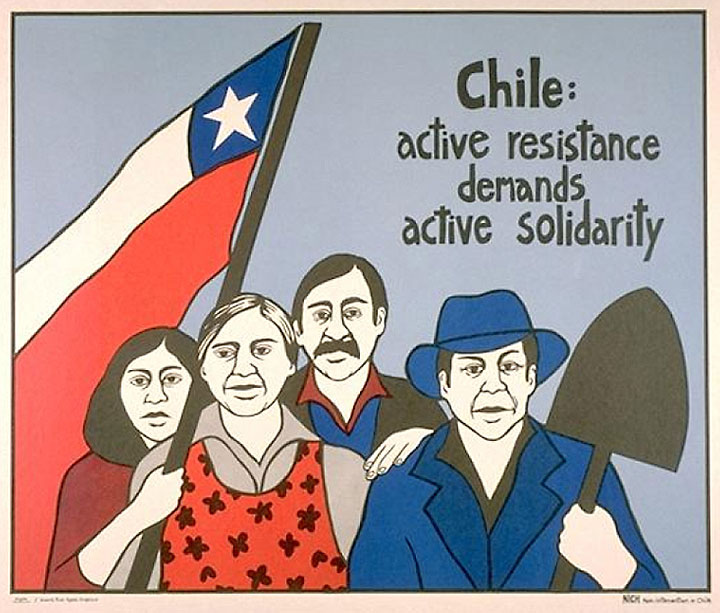
Poster by Lisa Kokin (1978), courtesy of Docs Populi
I learned a lot about Chile, the Allende period, the terror and barbarism of the Pinochet era, and participated in protesting the arrival of the “Torture Ship” Esmeralda when it sailed under the Golden Gate Bridge on a “goodwill” visit to the U.S. And I got a crash course in the “Left” when I found myself working with the Free Chile Center in San Francisco (largely full of supporters of Allende’s Popular Unity government) who were in endless conflict with the folks who founded La Peña in Berkeley (who were supporters of the MIR, the Movement of the Revolutionary Left, who had gone underground before the election of Allende and called for “arming the workers” as the antidote to the coming coup). The mid-1970s was a time when the bitter disputes between followers of the Communist Party and the Soviet Union and the growing ranks of those to their left seemed much more vital than they do in retrospect.
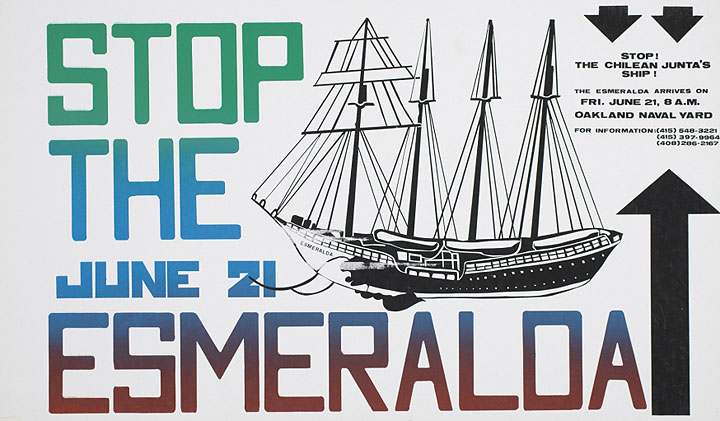
Poster courtesy of Docs Populi

It was a bit jarring to come up on the Esmeralda docked at the Navy base that dominates the port of Valparaiso.
This post will feature images from my tourism around Santiago. The next post will be focused on Valparaiso where I had the pleasure of spending a weekend and look forward to returning for a longer visit another time. In general my appetite for Chile was both satisfied and further whetted by this visit. I particularly want to visit regions to the south and north of the capital city and its nearby port (120 km) in Valparaiso.
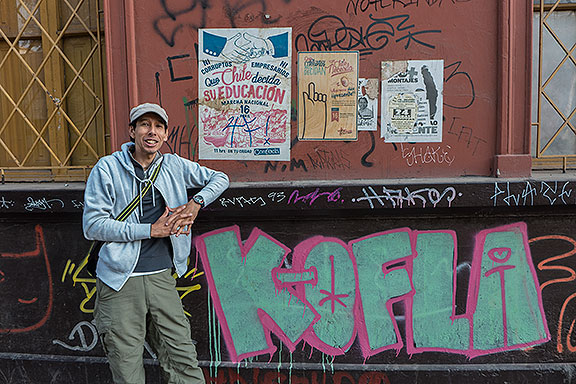
In my first hour in Santiago, Ricardo took me on a lovely walk around the place I was staying. The neighborhood walls are full of graffiti and posters.
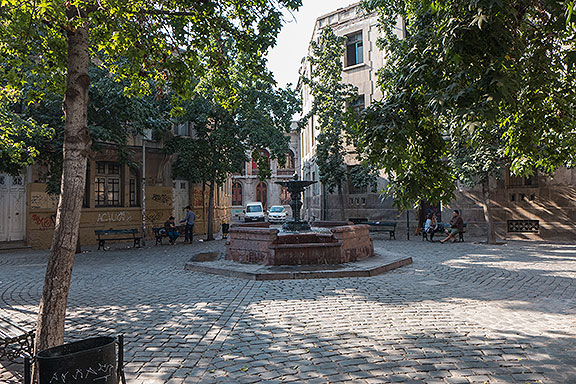
A short walk away was the “Concha y Toro” neighborhood, designed in the 19th century to replicate a cozy Parisian neighborhood. Ricardo had enjoyed several years in the adjacent building when it was abandoned, using it as a Social Center and bike workshop.
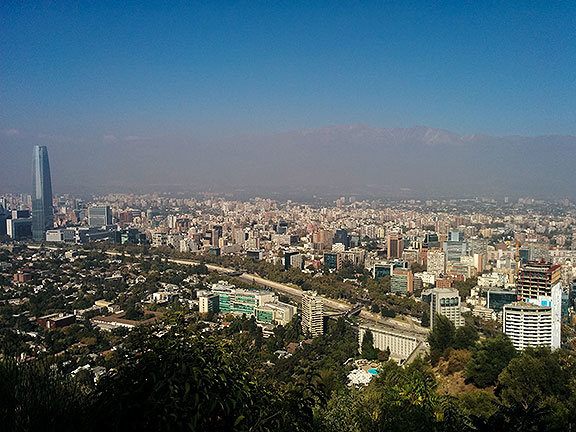
The Parque Metropolitano is a hill that juts up in the middle of Santiago, providing great 360° views as you ride up the hill…
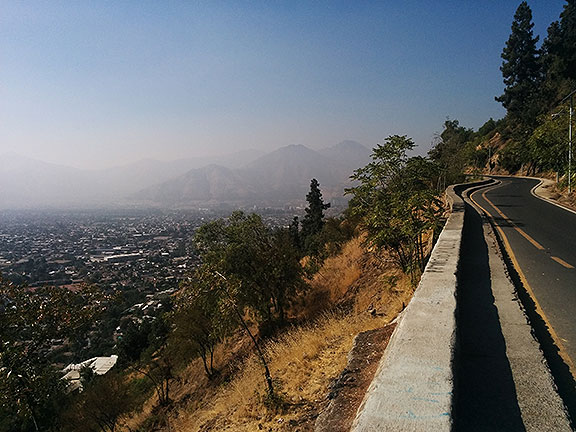
Damn smoggy town!
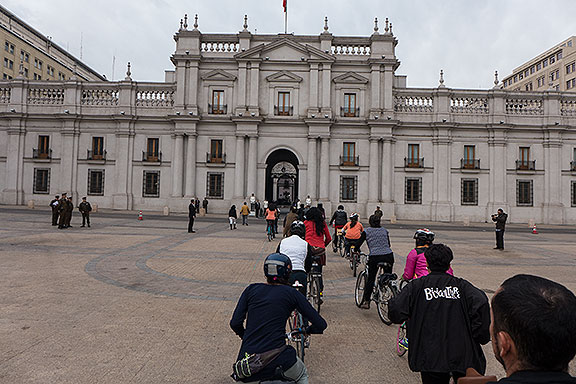
Riding in to La Moneda, the place where Allende was killed after bombardment on Sept. 11, 1973.

This statue to Salvador Allende stands adjacent to La Moneda where he was murdered in 1973.
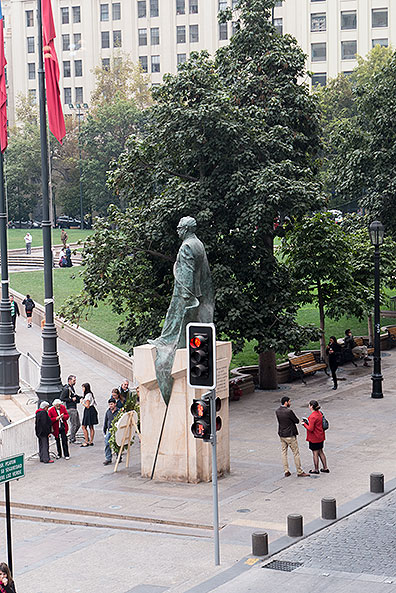
The Allende statue is straight across the intersection from the Intendente of Santiago’s office.
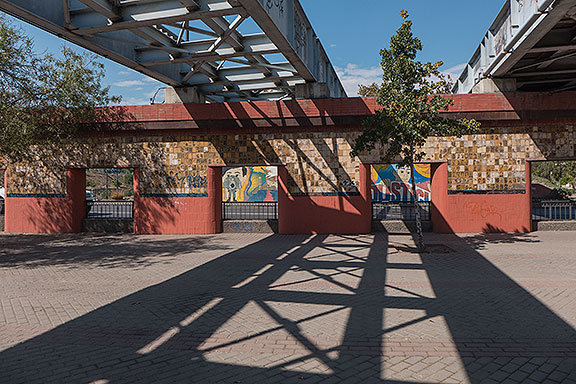
This wall to the disappeared with its small tiles memorializes hundreds of people who were abducted and killed by the dictatorship after the coup. This spot is where a dozen priests were lined up and shot for supporting popular resistance to the military.
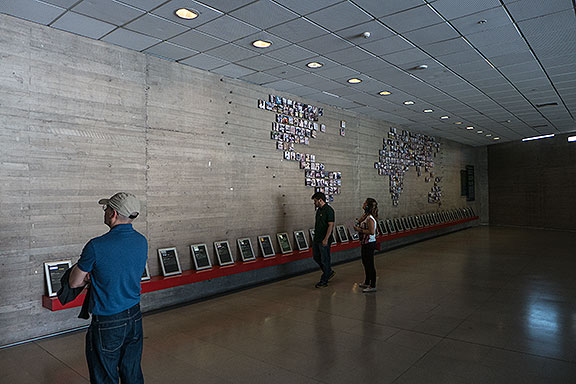
The Museum of Human Rights is a very impressive modernist facility that tells the many horrifying stories of torture, abduction, and death, as well as showing a lot of the pro-coup media and propaganda of the time.
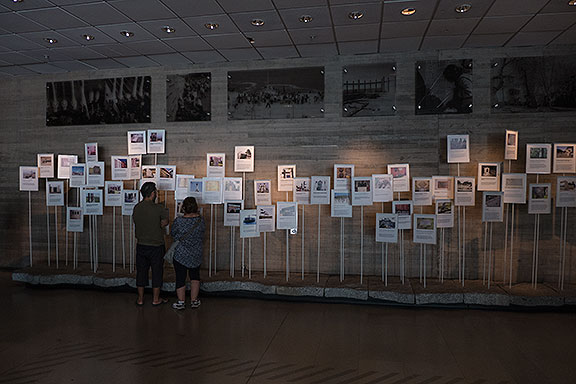
The ground floor is photo-friendly while the upstairs displays of media and personal accounts of the atrocities suffered are not. This display features specific memorials that have been built around Chile.
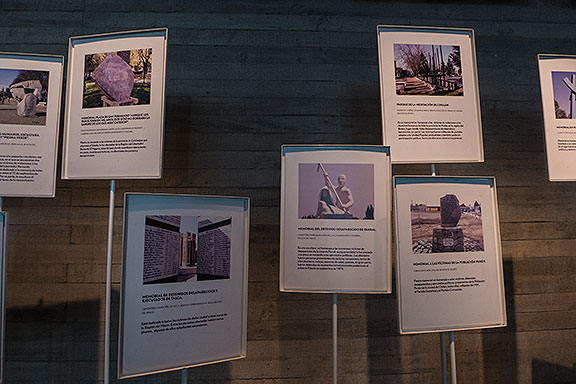
Close-up on the same exhibition.
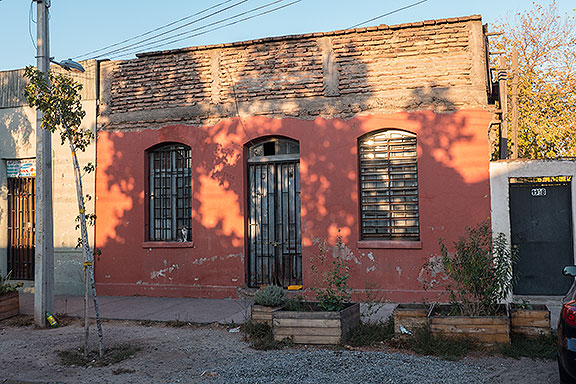
The Chilean singer Victor Jara was taken to the National Stadium by soldiers where they broke his hands before murdering him. This is his house in a residential neighborhood, now abandoned and without any marking indicating it was his home.
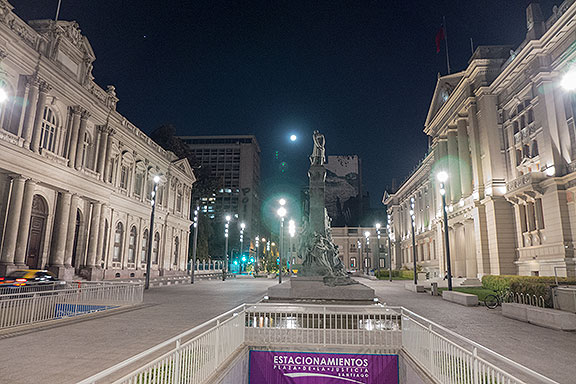
A night ride to see the sights brought to the Plaza de la Justicia where the moon rising added to the drama of the architecture.
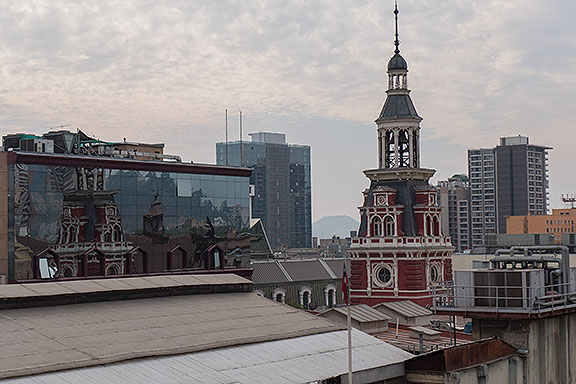
I can’t say that Santiago wowed me in terms of architecture but the many wonderful people I met left me with fondness for the city nevertheless.

Ricardo loves the Train Museum, and found out that I did too…
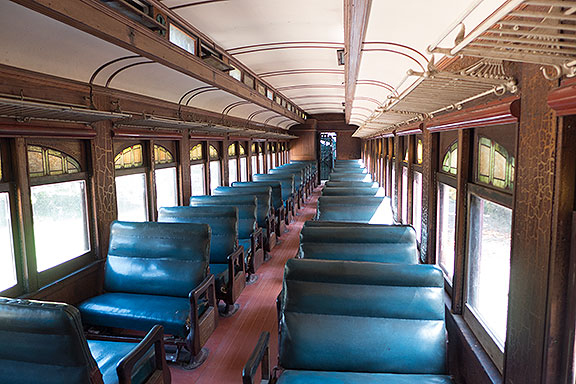
You can even visit the inside of an old luxurious passenger car.

Had to try out the local subway of course. It intelligently uses the same system as Paris with rubber wheels to hold down the noise, and to make the system much easier to maintain, expand, etc.
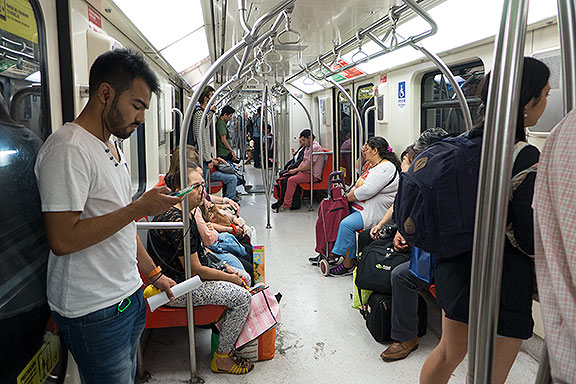
On the metro…

On our ride across town to Ricardo’s place, we came to a spot near a canal where the view of the Andes finally opened up for me.

Amidst a general aversion to history and old architecture, it was nice to come upon this cluster of old wooden structures across from the race track, and surrounded by modernist highrises.
Next up, Valparaiso, a city on the Pacific, sister city to San Francisco…












Leave a Reply